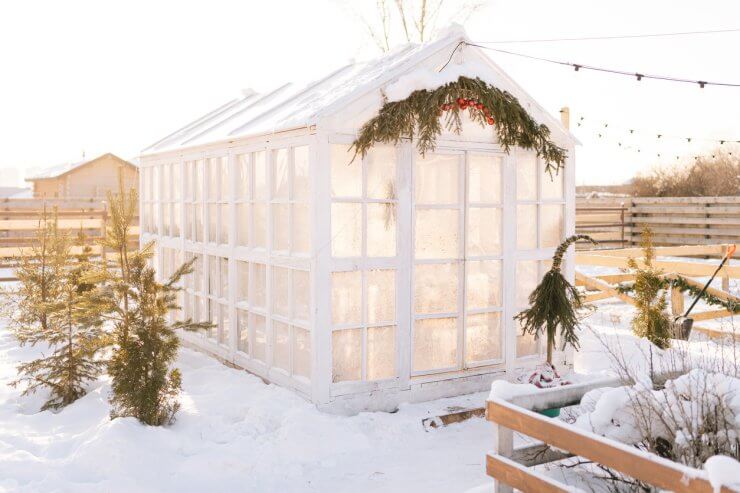
Fine, I’ll admit it; I’ve been guilty of scrolling through social media, admiring those picture-perfect greenhouse lounges. You know the ones – cozy chairs nestled among lush greenery, fairy lights twinkling overhead. It’s enough to make anyone dream of sipping hot cocoa in a tropical paradise, even as the snow piles up outside.
But here’s the thing: while those setups are undeniably cute, I’m more of a “fresh tomatoes in January” kind of gal. Don’t get me wrong, I love a good aesthetic. But for me, the real magic of a greenhouse is in defying nature’s rhythms and coaxing life from the soil when the rest of the world has gone dormant.
So, if you’re ready to trade your greenhouse lounge dreams for a bounty of winter-fresh produce, you’ve come to the right place. Let’s dig into 12 edible plants you can grow in your greenhouse this winter, along with some hard-earned wisdom I’ve gathered along the way.
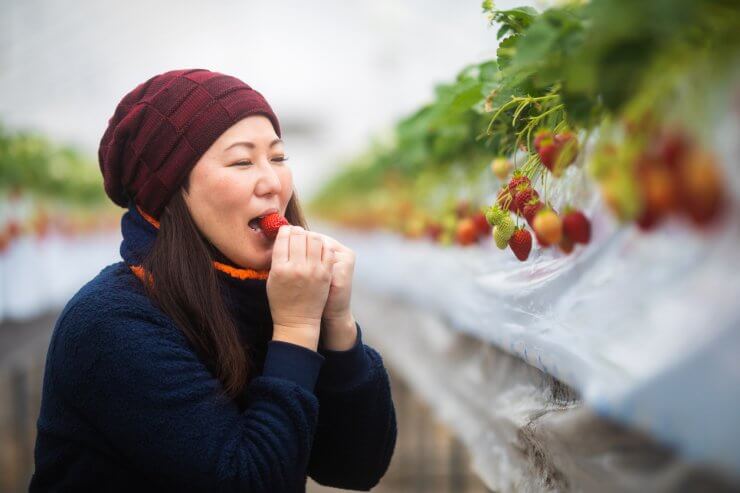
The Greenhouse Advantage: Why Winter Gardening is Worth It
Before we dive into specific plants, let’s talk about why greenhouse gardening in winter is such a game-changer, especially for those of us in colder USDA zones.
- Extended growing season: This is the big one. A greenhouse lets you start earlier in spring and keep going long after the first frost.
- Climate control: You’re creating a microclimate that can be tailored to your plants’ needs.
- Protection from pests and harsh weather: No more battling deer, rabbits, or sudden hailstorms.
- Water conservation: Greenhouses typically require less watering than outdoor gardens.
- Variety: You can grow plants that wouldn’t normally thrive in your climate zone.
Now, let’s get to the good stuff – what to grow and how to make it thrive.
12 Edible Plants for Your Winter Greenhouse
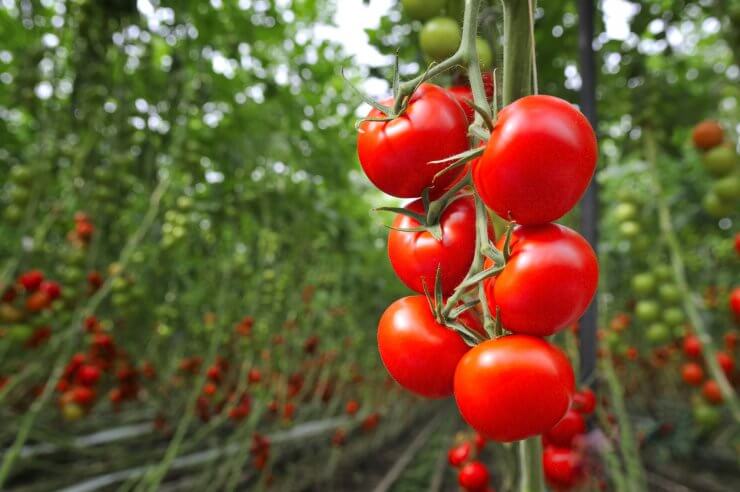
1. Tomatoes
- USDA Zones: 2-10 (in a heated greenhouse)
- Tips: Choose indeterminate varieties for continuous production. Provide sturdy supports and ensure good air circulation to prevent fungal diseases.
- Science Bit: Tomatoes need at least 6 hours of light daily. In low-light winter conditions, consider supplemental grow lights.
Tomatoes are a greenhouse superstar because they thrive in the controlled environment. The steady temperatures and protection from frost allow for extended harvests. For winter growing, start seeds indoors 6-8 weeks before your area’s average first frost date. In a heated greenhouse, you can plant these seedlings in late summer or early fall for winter production. With proper care, these plants can produce fruit throughout the winter and into spring.

2. Leafy Greens
- USDA Zones: 3-11
- Varieties: Lettuce, spinach, kale, chard
- Tips: Succession plant every 2-3 weeks for a continuous harvest. These cool-season crops actually prefer the milder temperatures of a winter greenhouse.
Leafy greens are ideal for greenhouse growing because they mature quickly and don’t require much space. They appreciate the cooler temperatures of winter, making them perfect for unheated or minimally heated greenhouses. You can start seeds directly in the greenhouse soil or containers from late summer through winter. Many varieties will be ready to harvest in as little as 30 days, providing fresh salads all winter long.
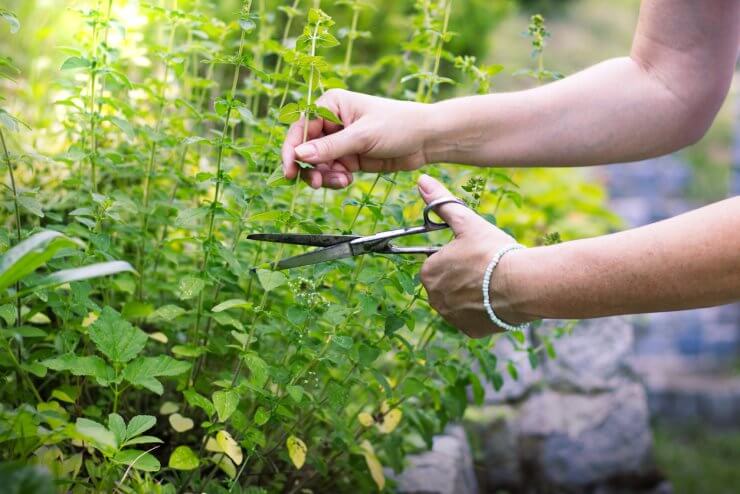
3. Herbs
- USDA Zones: 4-10
- Varieties: Basil, cilantro, parsley, chives
- Tips: Most herbs are compact, making them perfect for small spaces or vertical gardening. Harvest regularly to encourage bushier growth.
Herbs are excellent greenhouse plants due to their compact size and quick growth. Many herbs prefer the slightly cooler temperatures of a winter greenhouse. You can start most herb seeds directly in the greenhouse in early fall for winter harvests. Perennial herbs like chives can be brought in from outdoor gardens in the fall. Basil is an exception, preferring warmer temperatures, so start these seeds in late winter for spring harvests.
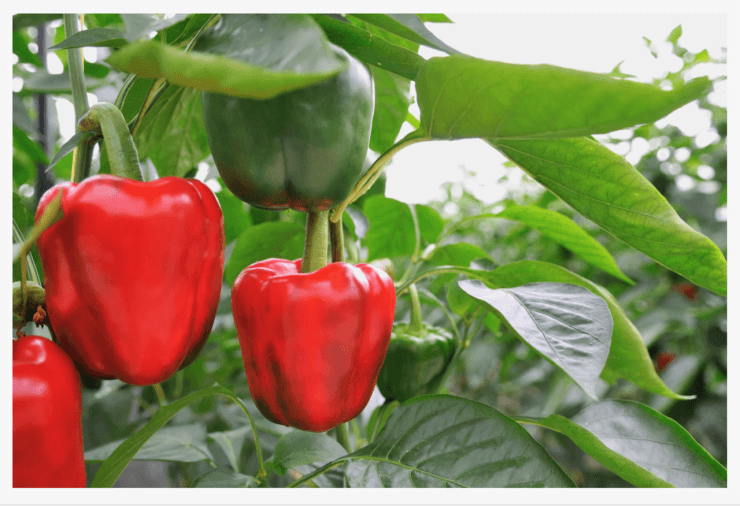
4. Bell Peppers
- USDA Zones: 3-11 (in a heated greenhouse)
- Tips: Peppers love warmth. If your greenhouse temperature drops below 55°F (13°C) at night, consider a heating mat for the roots.
- Science Bit: Peppers are self-pollinating, but giving the plants a gentle shake can help distribute pollen and improve fruit set.
Bell peppers excel in greenhouses because they love warm, consistent temperatures. The controlled environment allows for faster growth and higher yields than outdoor growing. Start pepper seeds indoors 8-10 weeks before your last spring frost date. For winter production in a heated greenhouse, you can start seeds in mid-summer and transplant in early fall. With proper care, these plants can produce peppers throughout the winter.

5. Cucumbers
- USDA Zones: 4-11
- Tips: Train vines up trellises to maximize space. Choose “greenhouse” or “English” cucumber varieties for best results.
- Science Bit: Cucumbers have separate male and female flowers on the same plant. Hand pollination with a small brush can increase yields.
Cucumbers thrive in greenhouses due to their love of warm, humid conditions. The greenhouse environment also protects them from common outdoor pests. For winter harvests, start seeds in late summer or early fall. In a heated greenhouse, you can grow cucumbers year-round. Choose varieties specifically bred for greenhouse conditions for best results.
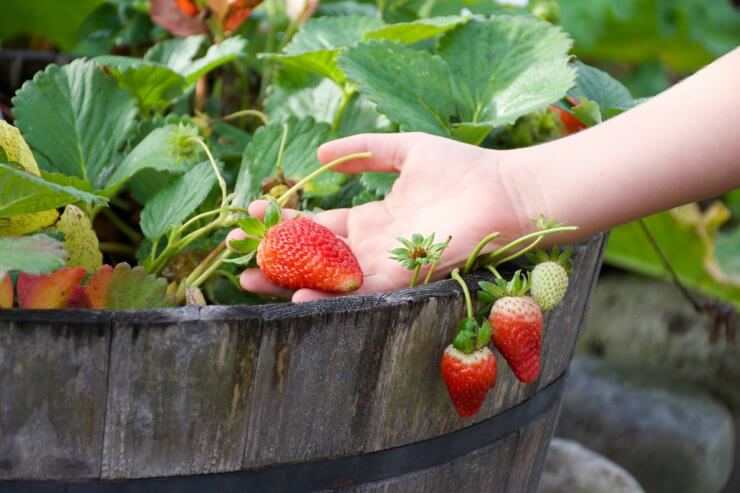
A close-up of a child’s hand holding a beautiful red ripe strawberry in a garden.
6. Strawberries
- USDA Zones: 3-10
- Tips: Use hanging baskets or vertical planters to save floor space. Choose day-neutral varieties for continuous fruiting.
- Science Bit: Strawberries need a period of cold to initiate flowering. Most greenhouse varieties have been bred to have a lower chilling requirement.
Strawberries are well-suited to greenhouse growing because they can produce fruit year-round in controlled conditions. They also benefit from protection against birds and other pests. Plant strawberry crowns in late summer or early fall for winter and spring harvests. You can also start seeds indoors in winter for summer fruiting plants.
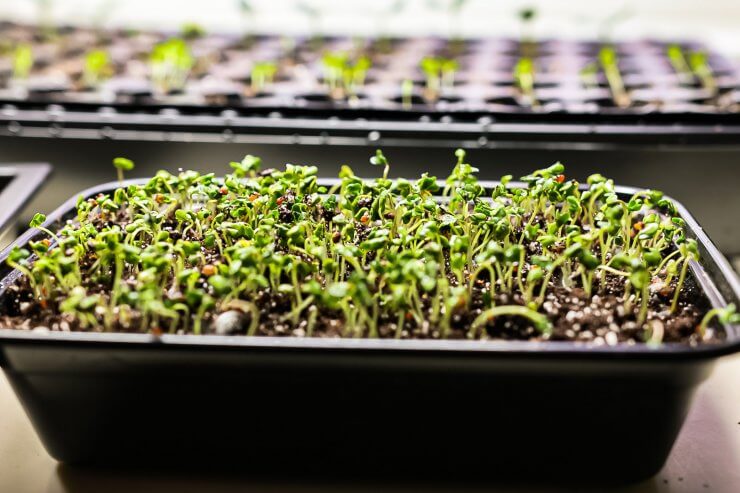
7. Microgreens
- USDA Zones: All
- Varieties: Radish, sunflower, pea shoots, broccoli
- Tips: Use shallow trays and harvest when the first true leaves appear, usually within 7-14 days of planting.
- Science Bit: Microgreens can contain up to 40 times more nutrients than their mature counterparts!
Microgreens are perfect for greenhouse growing due to their quick turnaround and high nutrient content. They can be grown year-round in any climate-controlled space. Start seeds in trays filled with a light, sterile growing medium. You can plant new trays every week for a continuous harvest throughout the winter.
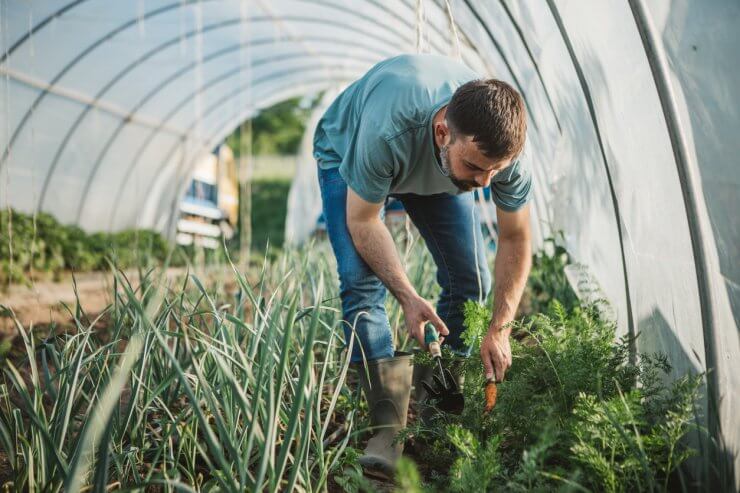
8. Carrots
- USDA Zones: 3-10
- Tips: Choose shorter varieties like ‘Paris Market’ or ‘Thumbelina’ for container growing. Keep soil consistently moist for best germination.
- Science Bit: Carrots prefer cooler soil temperatures (around 60°F/15°C) for germination, making them ideal for winter greenhouse growing.
Carrots are great greenhouse crops because they prefer cooler temperatures and can be grown in containers. The controlled environment allows for straighter, more uniform roots. Sow carrot seeds directly in the greenhouse soil or deep containers in late summer or early fall for winter harvests. With succession planting, you can have fresh carrots throughout the winter and spring.
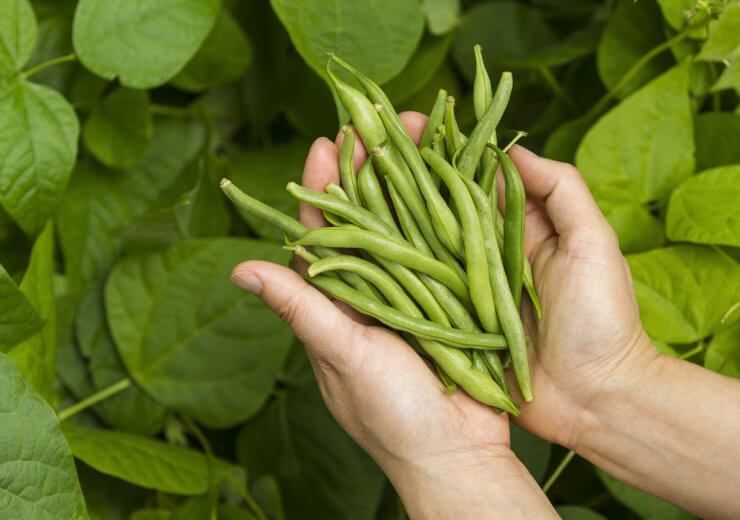
9. Bush Beans
- USDA Zones: 3-10
- Tips: Choose compact bush varieties rather than pole beans to save space. Plant in succession for continuous harvests.
- Science Bit: Beans are nitrogen-fixers, improving soil quality for future crops.
Bush beans are excellent greenhouse plants due to their compact size and quick maturity. The greenhouse protects them from frost, extending the growing season. Start bush bean seeds directly in the greenhouse soil or containers about 2-3 months before you want to harvest. In a heated greenhouse, you can grow bush beans year-round with new plantings every 3-4 weeks.

10. Radishes
- USDA Zones: 2-10
- Tips: Some varieties are ready to harvest in as little as 21 days! Perfect for impatient gardeners or filling gaps between slower-growing crops.
- Science Bit: Radishes are great companion plants, as their strong scent can deter many common garden pests.
Radishes are ideal for greenhouse growing due to their rapid growth and cool-season nature. They’re perfect for filling spaces between slower-growing crops. Sow radish seeds directly in the greenhouse soil or containers throughout the fall and winter. With their quick maturity, you can have fresh radishes every few weeks all winter long.
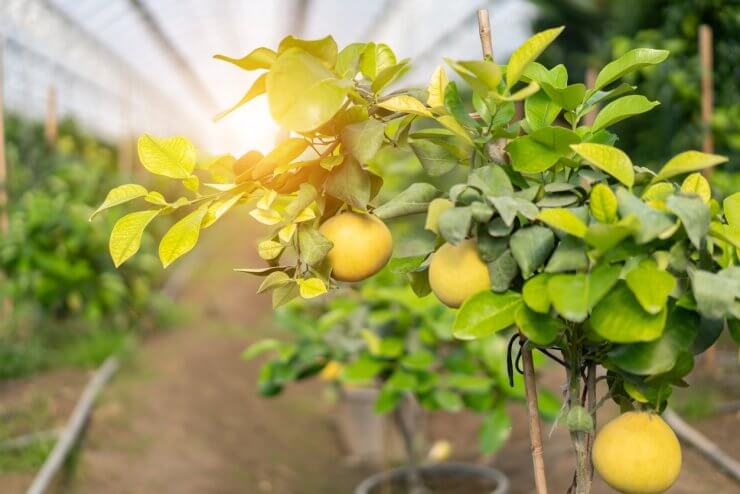
11. Dwarf Citrus Trees
- USDA Zones: 8-11 (or 4-11 in a heated greenhouse)
- Varieties: Meyer lemon, calamondin orange, kumquat
- Tips: Use a well-draining potting mix and ensure good air circulation to prevent fungal issues.
- Science Bit: Citrus trees are generally self-fertile, but giving the branches a gentle shake when in bloom can improve pollination and fruit set.
Dwarf citrus trees are excellent greenhouse plants because they benefit from the controlled temperature and humidity. The greenhouse protects them from frost, allowing for year-round growing even in colder climates. Plant dwarf citrus trees in containers in the spring or early summer to allow them to establish before winter. With proper care, these trees can produce fruit throughout the winter months.

12. Ginger
- USDA Zones: 8-12 (or 4-12 in a heated greenhouse)
- Tips: Start with organic ginger root from the grocery store. Plant in wide, shallow containers as ginger grows horizontally.
- Science Bit: Ginger is a rhizome, not a root. It grows best in warm, humid conditions – perfect for a greenhouse environment!
Ginger thrives in greenhouse conditions due to its love of warm, humid environments. The greenhouse provides the perfect microclimate for this tropical plant. Plant ginger rhizomes in late winter or early spring. In a heated greenhouse, you can harvest young ginger in the fall and mature ginger throughout the winter. The plant will go dormant in cooler temperatures but will regrow when it warms up.
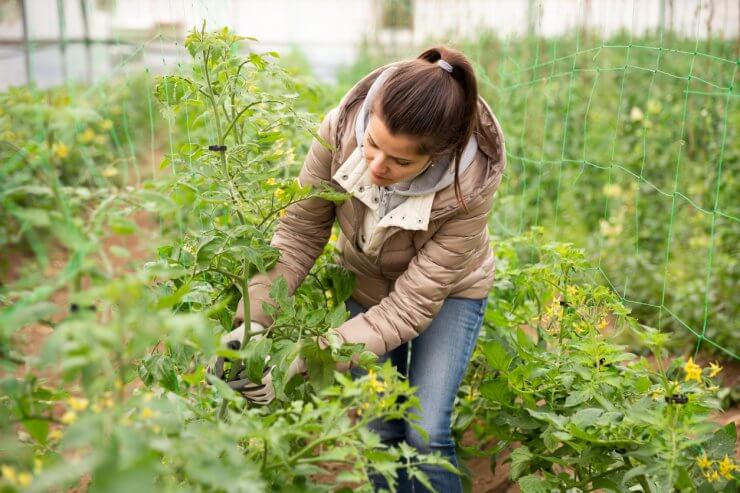
Maximizing Your Greenhouse Space
Now that we’ve covered what to grow, let’s talk about how to make the most of your greenhouse space:
- Go vertical: Use trellises, hanging baskets, and vertical planters to maximize growing area.
- Companion planting: Group plants that grow well together. For example, basil planted near tomatoes can improve flavor and deter pests.
- Succession planting: As one crop finishes, have seedlings ready to take its place.
- Use all levels: Place shade-loving plants under taller sun-lovers.
In my 10’x12′ greenhouse, I can comfortably fit:
- 6-8 tomato plants
- 2-3 cucumber vines
- 4-6 pepper plants
- Several trays of microgreens and leafy greens
- 10-12 herb plants
- 2-3 dwarf citrus trees
- Numerous pots of radishes, carrots, and bush beans
Remember, these numbers can vary based on the specific varieties you choose and how you arrange your space.

The Heart of Winter Gardening
As I sit here, sipping tea made with fresh mint from my greenhouse and planning my next planting, I’m reminded why I fell in love with winter gardening in the first place. It’s not just about the fresh produce (though that’s a major perk). It’s about the satisfaction of nurturing life when the outside world seems barren. It’s about the meditative process of tending to plants, watching them grow day by day. And it’s about the connection to our food, understanding intimately where it comes from and how it’s grown.
I also happen to love not having my lettuce pooped on by birds, just saying.
Sure, my greenhouse might not win any style awards. You won’t find any chic lounge chairs or artistic displays. But what it lacks in Instagram-worthy aesthetics, it makes up for in the promise of sun-warmed tomatoes in the depths of winter, the fragrance of basil on a snowy morning, and the simple joy of green, growing things when I need them most.
So, are you ready to turn your greenhouse into a winter vegetable paradise? I’d love to hear about your experiences, successes, and even the failures (because let’s face it, that’s how we learn). What are you planning to grow this winter? Do you have any greenhouse gardening tips to share? Leave a comment below and let’s keep this conversation growing!
Remember, every seed planted is a act of hope, and every harvest a small miracle. Happy growing, friends!


 Previous
Previous


Good to read. This will be my first year with a greenhouse and I am excited to have nice tomatoes in the winter. I have been growing inside and outside through out the summer. Thanks for the info.